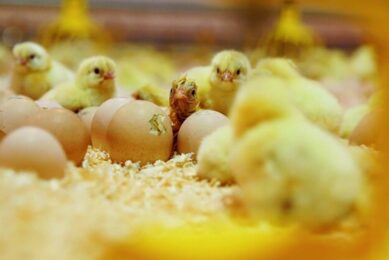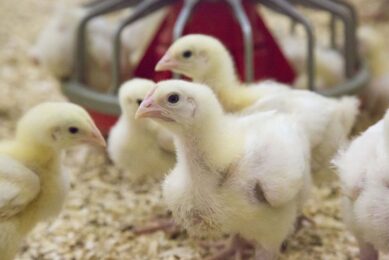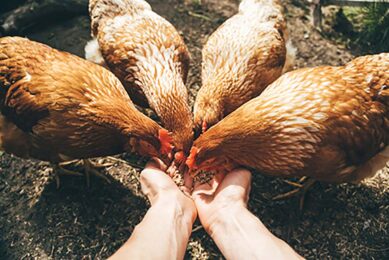Byproduct of biodiesel effective in poultry feed
Researchers at Iowa State University and the US Department of Agriculture’s Agricultural Research Services are studying a biodiesel by-product in poultry and swine feed.
Biodiesel often is made from soybean or vegetable oil, with crude glycerin the resulting by-product. This compound, which currently is used in such things as hand lotions, cosmetics and shampoo, is a pure energy source.
According to Mark Honeyman, animal science professor and coordinator of Iowa State’s Research Farms, with an increase in biodiesel production comes a surplus of crude glycerine.
Brian Kerr, an ARS research leader and collaborating associate professor of animal science, directed the glycerin feed trials
Metabolism trail with laying hens
Kristjan Bregendahl, assistant professor of poultry nutrition, conducted a metabolism experiment with 48 laying hens. Typical feed rations that included corn, soybean meal, meat and bone meal, and four levels of crude glycerin – 0, 5, 10, or 15% – were fed to the hens to determine the energy value of the glycerin.
Trial results
“We found the energy in crude glycerin was used with high efficiency by the hens,” Bregendahl said. “And we saw no adverse effects on egg production, egg weight, egg mass or feed consumption in this short experiment.”
However, the consistency of the feed was an issue. Bregendahl described the laying-hen diets that included 10-15% crude glycerin as “rather sticky.” Honeyman said that the 10% inclusion level of glycerol may be the upper limit.
Caution when using glycerin
Another issue was that when biodiesel is produced from soybean oil, methanol is used in the process. Methanol can be toxic, so Honeyman said swine and poultry producers interested in trying glycerin as part of a feed ration would need to work with the biodiesel plant to make sure methanol levels are below the Food and Drug Administration approved level of 150 parts per million in the glycerol.
Iowa State researchers, have a series of funding proposals in the works to further examine the use of crude glycerin in diets for nursery and finishing pigs, sows, broilers and layers.
For the latest poultry news, subscribe here.
Join 31,000+ subscribers
Subscribe to our newsletter to stay updated about all the need-to-know content in the poultry sector, three times a week. Beheer
Beheer








 WP Admin
WP Admin  Bewerk bericht
Bewerk bericht